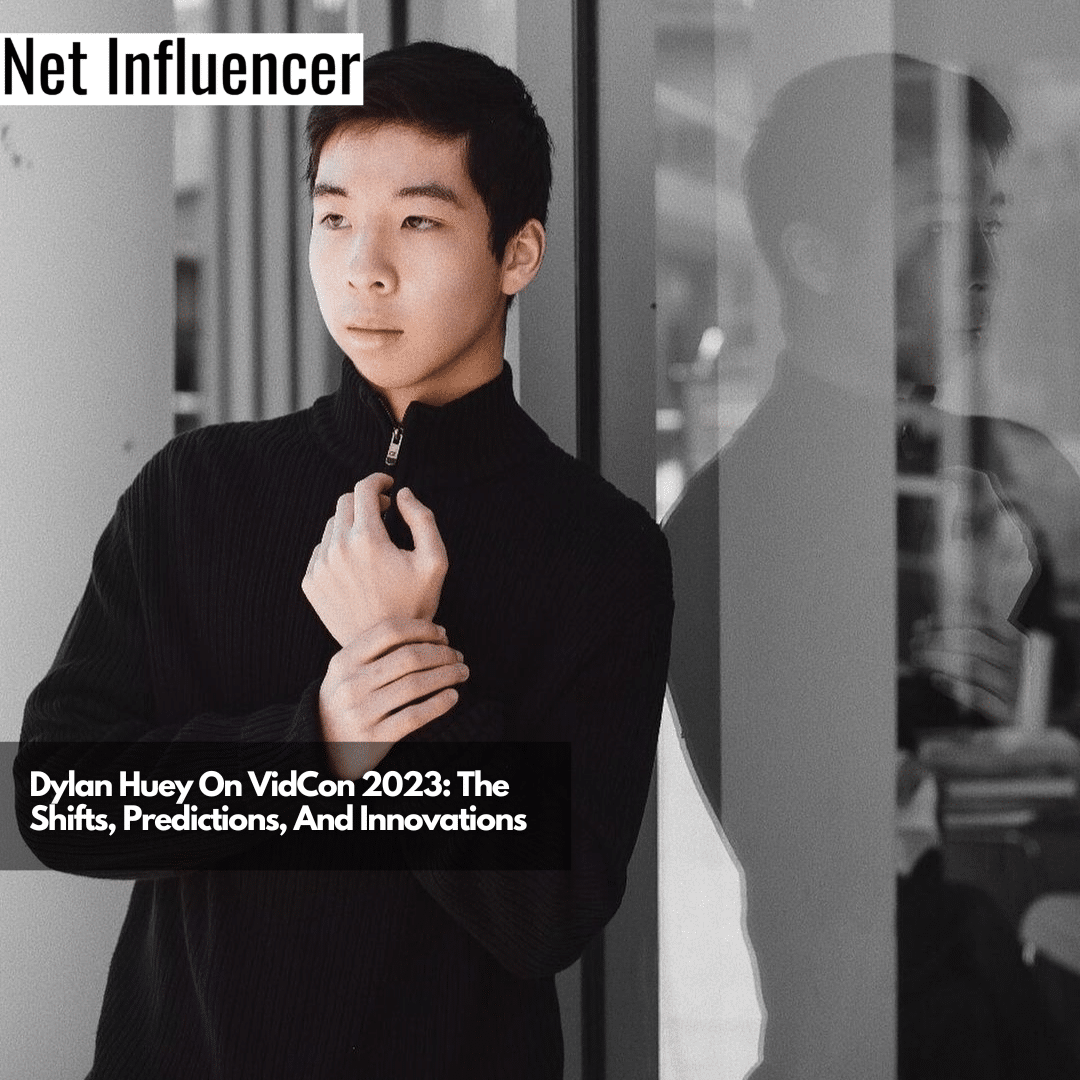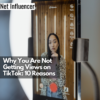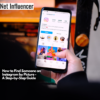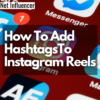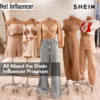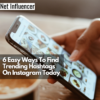Influencer
Dylan Huey On VidCon 2023: The Shifts, Predictions, And Innovations
Dylan Huey began his career in social media while in middle school as a way to address bullying, rapidly gaining over 100,000 followers within six months. Now managing influencers and running the influencer organization Reach across 30 US universities, Huey highlights the role of authenticity and creative interaction in his rise to success. He also emphasizes the transformative potential of generative AI for the future of content creation, enabling influencers to focus more on community building rather than the logistics of content production and distribution.

Dylan Huey started as a content creator in 2016. He was finishing middle school at that time and used social media because he was getting bullied in school. Social media became an avenue for him to show other people who were also bullied that someone could relate to them.
In his first week on social media, he gained over 30,000 followers. He contributed this sudden growth and success to his live streams and being authentic to his audience. He was streaming for about eight hours every day doing anything, whether that was reading out loud his homework or interacting with people who were watching his live streams. After six months, he gained over 100,000 followers and started going on influencer tours.
At 16 years old, Dylan started managing influencers. During this time, he was an incoming senior at the University of Southern California, taking up business administration. He also ran the first and only influencer organization at the university called Reach. Fast forward to the present times, Reach is now in 30 different universities across the United States.

What were you posting when you were being bullied at school?
“In the beginning, my content was really about motivational quotes for myself because I wanted to inspire myself every morning to wake up and go to school. And it slowly steadied into more lashing content where I was able to interact with fans and give them a real, authentic experience,” Dylan explains.
Dylan finds the whole experience interesting because he started doing influencer tours in 2017 and met plenty of parents who told him that his live streams saved their children’s lives. For him, these comments were a big testament to his live streams, but he also acknowledges that his biggest following came from Musically.
He also did lip-syncs and collaborations with other creators, which he believes made his content more genuine and helped him garner his initial audience.
What inspired you to pursue a career in content creation, and how did you navigate the early stages of your journey?
Back in 2016, Dylan started social media not because he wanted to make money or thought that it was going to be a long-term career for him. “But a lot of people I was talking to in social media started to do social media because they had a motivation for me; it was to spread awareness about bullying, mental health, and being an advocate for other people and showing other people that there really is a place for them,” he adds.
He’s a firm believer in dreaming big. He also wanted to inspire other people, show them that they can do anything they set their minds to, and let them know they’re not alone. These things have always been his goals, even at an early age.
Another reason why Dylan wanted to ride the wave when social media took off was because he knew his content was making a difference in other people’s lives. He was able to build a community, which encouraged him to continue making content this very day.
What was the moment that you realized that being a content creator could be a career and you could make a living out of it?
Dylan recalls two moments: one was when he was 16 years old, doing influencer tours, and heard from parents saying that his content saved their children’s lives and inspired them. The second moment was being able to interact with fans during huge events like VidCon.
He shared having moments of burnout and stopping making content for social media for years but admitted that these moments motivated him to propel himself in this space.
As an established content creator, what do you enjoy most about the creative process?
“I’m just someone who really strives to be creative on any scale,” Dylan says. He has an entrepreneurial background, as he came from Silicon Valley. He can come up with business plans, business ideas, and even strategic partnerships. He translates these by being creative when he creates content.
But Dylan doesn’t want his content on social media to feel like it’s an extra step in his day. He aims to give his audience raw and authentic content that shows his everyday life and what he’s doing — whether it’s super exciting, like going to a movie premier, or super mellow, like attending several work meetings during the day.
“I try to make that my image on social media because I think a lot of people just show one side. They show all the amazing things they do — going to movie premiers, influencer events, and screenings — but I think people want to see the authentic side of their favorite influencers n a natural light where they can really get to know who they’re interacting with,” Dylan adds.
How do you ensure your content stands out?
Dylan doesn’t stress too much about ensuring that his content stands out. He says, “I don’t need to have the most flashy, showy, or funniest video. But my platform has been built around what my life looks like, where there could be some highs and lows because that’s what an everyday person’s life looks like.”
What challenges have you faced as a content creator, and how have you overcome them?
When Dylan started social media in 2016, there weren’t too many brands or people paying for influencer marketing. In fact, he didn’t think that influencer marketing was going to get this big as it does today.
“And for me, I had to provide to a lot of brands that I was valuable for them, and I could help them provide a positive ROI,” Dylan says. He recognizes that times have definitely changed, and social media is a bit oversaturated now, with a lot of people having thousands and millions of followers.
Without a doubt, influencer marketing has gotten so much bigger today. But in the start, it was all about proving Dylan’s worth and value to people and brands that don’t see it yet.
You attended VidCon as a featured speaker. How was your experience at the conference this year?
Dylan has been going to the annual VidCon since 2017 and has been involved in the agenda since then. Last year, he joined a few panels and was a featured creator back in 2017.
“It’s really been a cool time to see how the creator economy shifted,” he says. He has been participating in the VidCon since 2018 and has seen how the conference has changed significantly. This year, the number of speakers has doubled, as well as the featured creators.
For Dylan, this change is a testament that more and more creators are becoming their own entrepreneurs with their own brands. They’re working on building their own businesses and need partnerships. “The delineation between featured creator and speaker doesn’t have any difference in my eyes. There’s no one-size-fits-all when it comes to the creator, and everyone needs to have a digital presence to be successful in today’s economy,” he explains further.
Could you share some highlights from your session at VidCon and the key takeaways you wanted to impart to other creators?
Dylan’s panel was about next-gen leaders. He talked about Gen Z in a room full of millennials, which he found very interesting. “We talked about the creator to the executive pipeline and the importance of the skills that we’re seeing in Gen Zs, along with their day-to-day responsibilities and the shift between feeling like you should be your own boss and the aspect of creators starting to become executives,” Dylan adds.
Dylan talked about a lot of things during their panel, but the general takeaways of his talk include the importance of new technology and tools to help the average consumer become a creator, the importance of nurturing relationships, the rise of generative AI, and the different revenue streams and platforms available for anyone, which they can use to earn.
What were some of the most interesting or insightful discussions you had with fellow creators or attendees during your time at VidCon?
“There are so many more platforms out there that can help creators become full-time creators; great platforms for creators who want to launch their merchandise. There are also so many companies out there that can really help scale influencers and turn them into businesses,” Dylan says. These have been the biggest takeaways he saw during this year’s VidCon.
Did you see any new trends or emerging opportunities in the creator space at VidCon? If so, what caught your attention?
“The main thing that caught my attention was the evolution of generative AI and its impact on a creator’s workflow,” Dylan states. Although important, he doesn’t see this tech overtaking what an influencer does and how an influencer works. “I just think generative AI has the potential to become a paintbrush in an influencer’s toolkit to help them speed up their productivity and help them maximize their workflow and have more opportunities to interact with fans,” he continues.
For Dylan, generative AI will allow creators to have more time to focus on building communities rather than editing or distributing content, which is usually what the average creator focuses on.
How do you think VidCon contributes to the growth and development of the creator community, and what role does it play in fostering collaboration and networking?
“VidCon is the only week that creators come together and collaborate, and that’s a very interesting thing because the aspect of collaboration is very important on social media,” Dylan says. When influencers collaborate right now, it only involves texting each other to get together, but they are already friends.
VidCon is the only time when industry executives and creators all come together and share insights. It’s also an excellent opportunity for brands to access top-tier content creators.
Dylan thinks VidCon has a really large influence on creators and other individuals and brands in the content creation space. He would love to see more and more companies and brands hosting not only VidCon but also smaller events with the goal of bringing as many influencers together as possible.
Can you discuss any memorable interactions or encounters you had with fans or supporters at VidCon that left a lasting impression?
“I mainly stayed on the industry track, honestly, because I wanted to hear all the insights, especially with the growing wave of the creator economy,” Dylan says.
Last year, he stayed at the creator hotel, where he interacted with more fans. But this year, he sat at the panel and listened because he wanted to make it to a point to hear what industry executives were talking about.
“I don’t see industry executives as fans nowadays; more like colleagues and peers. But I really wanted to see this new perspective of VidCon this year and really take in information that I previously haven’t ever taken in a while at VidCon,” he adds.
What are your thoughts on the current state of the creator economy and its impact on content creators?
Dylan recognizes that the creator economy is going in a good direction, but many people in the space have to teach themselves or learn how to find their wave by doing trial and error. “We understand that so many people want to be in the creator economy now. We want to make a place where creators and potential industry executives can feel they’re supported, can get the resources they should have to learn about the growing economy and in the creator space,” he shares.
This has been their focus on Reach because they understand that there is no place for creators to gain access to educational resources unless they’re part of the top 1% and are managed by an agency or company. Reach wants to help the 99% of creators who want to work full-time but don’t have any agency that oversees them or provides them with tried and tested strategies.
How do you see the creator economy evolving in the coming years, and what opportunities or challenges do you anticipate?
“There are more opportunities for creators to form long-term strategic partnerships with brands in the next few years,” Dylan says. “But everyone will see the importance and need of having a digital presence in some capacity, whether they’re a brand or individual.”
Nowadays, people who are laid off are going to LinkedIn and asking their social circle for any warm leads and finding a new job. People who don’t have a strong digital presence won’t be able to do any of these things. This is also the reason why it’s crucial to network.
Can you tell us more about USC Reach and its significance as the first content creator club at a university?
Reach is in 30 different universities across the United States and is now on track to be in a hundred universities. They have three big goals, which were all explained by Dylan:
“The first bucket is we want to make sure that our members come together, learn from each other, collaborate with each other, and really grow. The second big thing we do is help our club members get a full-circle perspective on social media. Then the last big thing that we do is help our club members get the tools, resources, partnerships, and programs, which they can utilize to grow and influence their content.”
For Dylan and all of Reach’s members, Reach is a place that helps anyone interested in social media gain insight into the space in a way that isn’t taught in a classroom at all.
How does USC Reach support student content creators, and what benefits do members gain from being part of the club?
Reach is a very exclusive club. Its USC chapter received 250 applicants last fall and only accepted 38. In its UCLA chapter, it had 82 applicants and only accepted 25.
Reach has an application process because they’re looking for someone who’s really passionate about social media. “We know that there are only so many resources and opportunities that we can provide our members. We’re looking for individuals who can really help and support and can leverage the resources that we have to help them grow,” he adds.
But in terms of resources, Reach provides a ton to its members, including grand deals, workshops, educational resources, internships, collab opportunities, and more.
Content creation isn’t taught in college, which is why Reach aims to fill in that gap. In fact, Dylan considers Reach as the new wave of what the creator economy in college looks like.
Looking ahead, what are your plans and aspirations for the future as a content creator? Can you share any exciting projects or collaborations that you have in the works?
“Reach is scaling every day. We will be a hundred universities by the end of the year, so we’re working on that. We want to create a place for our alums and open up this environment not just for college students but for anyone who’s a creator to have that aspect of community that Reach embodies,” Dylan shares.
Reach is working on more opportunities and more curated events that they can open up to the average content creator. “But on my side, personally, I’m working on a ton of different projects. I’m trying to work on some very creative, out-of-the-box videos,” Dylan concludes.
Based on your experience, what advice would you give to aspiring content creators looking to thrive in the creator economy?
“There are a lot of companies out there that are tapping generative AI and syndication, and all these different things can help an up-and-coming creator or a creator who wants to start out to get their content out there. So leveraging those tools will make such a difference,” Dylan shares.
With these tools, aspiring content creators won’t feel burnout as fast and come up with more fun ideas. These tools also help them do more collaborations, post content on different platforms in the simplest way possible, and form relationships with brands.
And for those who want to become a content creator, Dylan has this to say, “Just get started. You can’t call yourself a singer if you’re not singing, and you can’t call yourself a creator if you’re not creating.”
It only takes one video for any aspiring creator to go viral. As such, Dylan advises them to make content that speaks for them. He adds, “Don’t make content that you think is boring; make content that you would feel happy to continue making for the next ten years. It doesn’t have to be the best or perfect; everything is a learning journey.”


